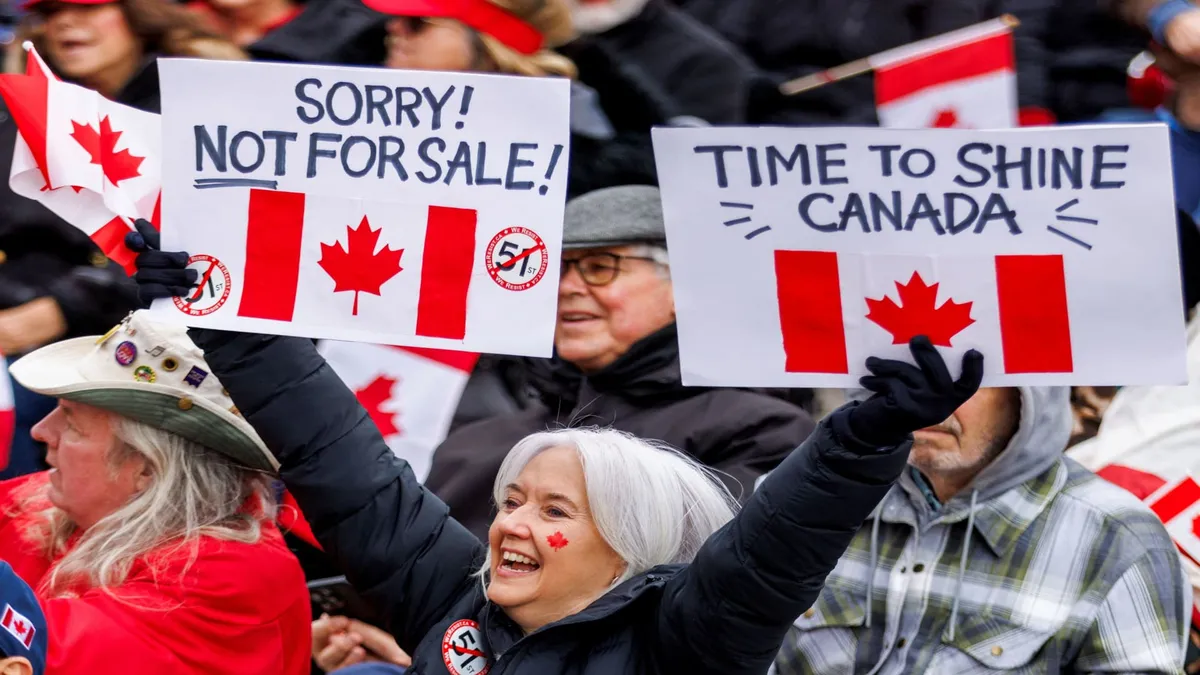
According to a report by Carlos Osorio from Reuters, Canadians are increasingly choosing to skip trips to the U.S., and this trend could soon extend to visitors from other countries. This shift poses a significant threat to the United States' travel industry, which is already facing a staggering $50 billion travel deficit. Various factors contribute to this decline, including an unfavorable currency exchange rate, the current political climate in the U.S., and concerns surrounding trade policies implemented by President Donald Trump. Additionally, high-profile detainments of individuals with valid visas and long wait times for visa processing have added to the tensions between the U.S. and its longtime allies.
These troubling trends have raised alarms within the U.S. travel industry, which generates over $1 trillion in direct spending annually. The U.S. Travel Association expressed concerns in a recent statement to CNBC, emphasizing the perception of America's welcoming nature, a slowing U.S. economy, and rising safety issues. The organization, which includes major hotel chains and airlines among its members, is actively collaborating with the White House and Congress to implement policies that promote economic growth and maintain the U.S.'s competitive position in the global travel market. With billions of dollars at stake, the implications of this decline could be profound.
Data from the Commerce Department reveals that Americans spent more abroad than foreign visitors spent while traveling in the U.S. Last year, the travel deficit reached over $51 billion, which excludes spending on medical and educational purposes. Despite welcoming more than 72 million visitors in the previous year, this figure remains below pre-COVID levels, according to a report by Jefferies. Canadian travelers accounted for the largest share, making up 28% of the total, followed closely by Mexico at 23%.
Recent statistics indicate a notable decline in both air travel and land crossings between the U.S. and Canada. In February, return flights for Canadians dropped by 13%, while car trips fell by 23%, as reported by Statistics Canada. Additionally, hotel demand in border areas, such as Bellingham, Washington, and Niagara Falls, saw decreases of 8% and 3.5%, respectively. However, demand in Florida, a popular destination for Canadian tourists, rose by 3%.
In response to changing travel patterns, Canadian airlines are adjusting their routes. For instance, Flair Airlines has canceled its planned route from Toronto to Nashville, Tennessee, citing consumer demand as the driving factor behind route decisions. WestJet has similarly observed a shift in its customer base, with travelers opting for alternatives in popular sun destinations like Mexico and the Caribbean. The airline's spokesperson noted their commitment to adapting to consumer preferences and demand.
While U.S. household spending on credit and debit cards grew by 1.5% as of March 22, spending on airlines declined by 7.2%, according to a recent Bank of America report. United Airlines CEO Scott Kirby highlighted the significant decrease in trans-border travel from Canada, resulting in route reductions for the airline, particularly those connected to U.S. government-related travel.
Another challenge affecting the U.S. travel industry is the increasing number of travel warnings issued by various countries, including Germany, the United Kingdom, and France. These advisories stem from concerns over detentions of individuals with valid visas and controversial policies, such as Trump's executive order recognizing only two biological sexes. For example, Germany has advised travelers with non-binary gender entries to seek clarification on U.S. entry requirements before traveling.
Travel warnings could deter international visitors, particularly those considering their first trip to the U.S. Carolin Lusby, an assistant professor in tourism management, noted that while destinations often experience rebounds after incidents, restoring a tarnished image requires substantial effort. The long-term economic impact of these shifts could result in billions of dollars lost for the U.S. travel industry if the current trends continue.